Found a total of 10000 related content

How to Build Your Own Progressive Image Loader
Article Introduction:Progressive Image Loading: A Smooth, Efficient Approach to Image Display
This article explores progressive image loading, a technique enhancing user experience by prioritizing speed and visual appeal. It utilizes HTML5, CSS3, and JavaScript to deliv
2025-02-17
comment 0
267
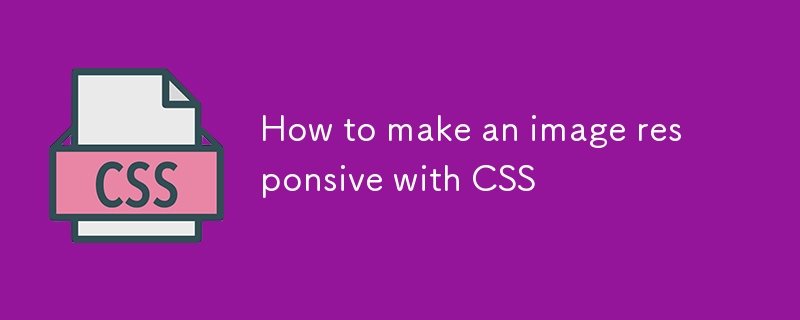
How to make an image responsive with CSS
Article Introduction:To make the image automatically resize and maintain proportion on different devices, it can be achieved through the following methods: 1. Set max-width:100% and height:auto to make the image scale and maintain proportion according to the container width; 2. Use object-fit to control the image filling method, such as cover cropping excess parts, contain complete display, and fill forcibly fill; 3. Provide multi-resolution image resources with srcset to improve loading performance and display quality; 4. Ensure that the image container is set to a reasonable width or use elastic layout to ensure responsive effects.
2025-07-19
comment 0
440
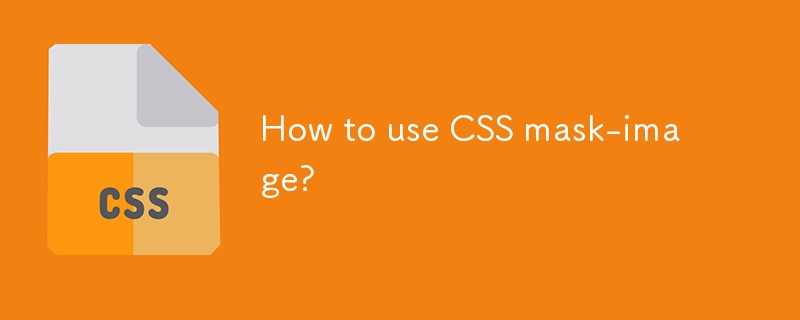
How to use CSS mask-image?
Article Introduction:The mask-image attribute of CSS controls the visible area of the element through pictures or gradients, achieving visual effects such as fading, hollowing out, and image cropping. 1. Use mask-image to set the mask image, white display, black hidden, gray translucent; 2. It is recommended to use PNG format, and use mask-repeat and mask-size to control the mask direction and size; 3. Add -webkit-prefix to improve browser compatibility; 4. It is often used in scenes such as image fading, text hollowing, dynamic mask transition; 5. Pay attention to the mask image scale, element background settings and Safari compatibility processing. Mastering the combination of black, white and gray control, compatibility processing and animation can achieve attractive visual effects.
2025-07-18
comment 0
144
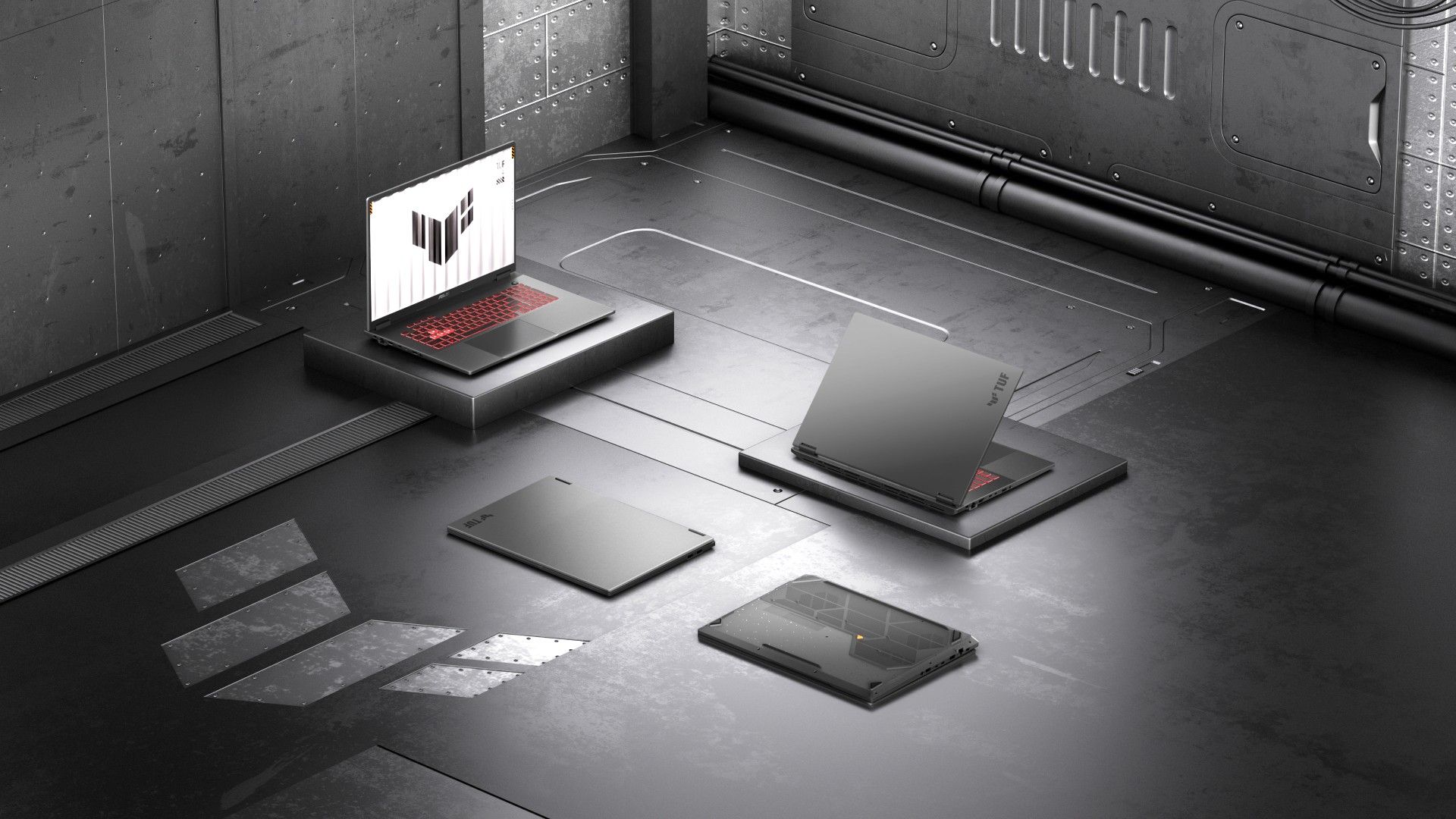
ASUS Has New 18-Inch Gaming Laptops
Article Introduction:The biggest difference between the two models is the graphics card. The FA808UM-IS74 is equipped with an NVIDIA GeForce RTX 5060 laptop GPU, while the FA808UP-NS74 is equipped with a more powerful NVIDIA GeForce RTX 5070 laptop GPU. This means the 5070 will provide better performance, with higher frame rates and possibly better ray tracing effects. Both GPUs can run modern games at high settings, but the 5070 will handle higher resolutions, faster refresh rates and stronger visual effects more smoothly. The display is another difference between the two models. FA808UM-IS74 comes with an 18-inch FHD (1920
2025-06-05
comment 0
729

How to create a simple image gallery in HTML?
Article Introduction:To create a simple image gallery on a web page, use HTML and CSS to do so. 1. Use div to wrap multiple img tags to build the basic structure; 2. Use flex or grid layout to display pictures side by side, and set gap control spacing; 3. Add hover effects to improve the interactive experience, such as border changes and image enlargement; 4. Optional responsive design to adapt to different screen sizes.
2025-07-14
comment 0
780

Photoshop Compositing Secrets: Create Stunning Visual Effects
Article Introduction:Create amazing visuals in Photoshop by following steps: 1. Place image elements on different layers, adjust order and transparency; 2. Use masks for non-destructive editing to hide or display specific areas; 3. Apply blend mode to change layer interactions to produce unique effects. Through these techniques, ordinary images can be transformed into a compelling visual feast.
2025-04-03
comment 0
1209
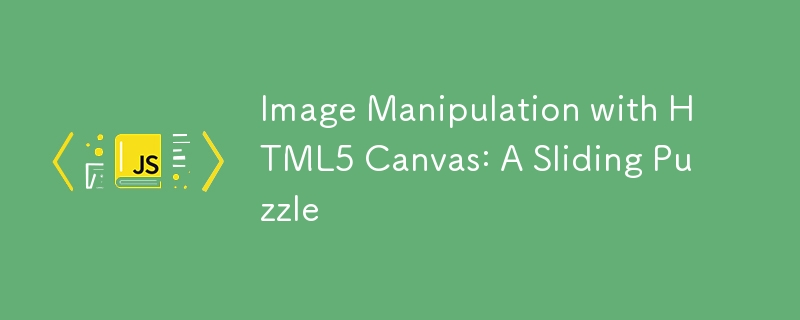
Image Manipulation with HTML5 Canvas: A Sliding Puzzle
Article Introduction:Core points
The HTML5 canvas element allows native integration of multimedia content, including line drawings, image files, and animations, into web pages, and can be used to create sliding puzzle games.
The canvas drawing is performed through a context that is initialized by the JavaScript function getContext(). The drawImage() function in JavaScript is used to display images on canvas, and different parameter options allow resizing images and extracting image parts.
The game logic of the sliding puzzle involves creating a two-dimensional array to represent the board. Each element is an object with x and y coordinates that define its position in the puzzle grid. checkerboard
2025-03-01
comment 0
1000
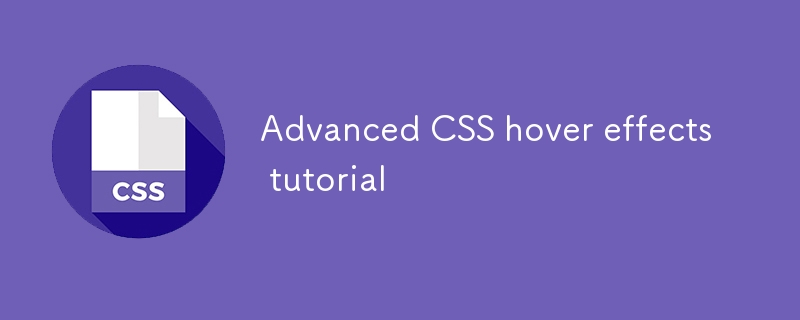
Advanced CSS hover effects tutorial
Article Introduction:The hover effect of CSS can enhance the interactive texture through various techniques. 1. Use transition to achieve smooth animation, control the process of color, size and position change, and enhance the sense of nature; 2. Use pseudo-elements (::before or ::after) to create mask or scan effects to enrich visual feedback; 3. Combine transform and filter to achieve dynamic effects such as image enlargement, contrast changes and shadows; 4. Pay attention to mobile compatibility issues, avoid relying on hover to display key information, and consider JavaScript or alternative interaction solutions.
2025-07-07
comment 0
990
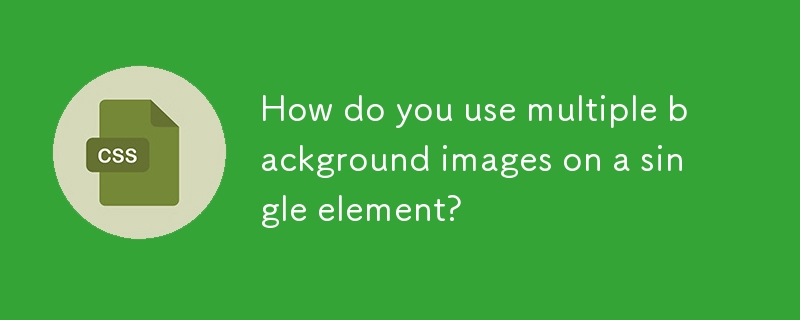
How do you use multiple background images on a single element?
Article Introduction:The key to setting multiple background images for elements in CSS is to use comma separation and attribute order correctly. 1. Use the background-image attribute and use commas to separate multiple image addresses. The first image is displayed on the top layer; 2. Use background-repeat, background-position and other attributes to control the display method of each image, and the values of each attribute correspond to each image in order; 3. You can also use the background abbreviation attribute to define all parameters at once to improve code readability and maintenance; 4. Actual applications include buttons and icons, decorative borders, page title bars and other effects. You can master the corresponding relationship between the order and attributes and use them flexibly.
2025-07-15
comment 0
289

Using HTML5 Semantic Elements for Page Structure
Article Introduction:Using HTML5 semantic tags can improve web structure clarity, accessibility and SEO effects. 1. Semantic tags such as,,,, and make it easier for the machine to understand the page content; 2. Each tag has a clear purpose: used in the top area, wrap navigation links, include core content, display independent articles, group relevant content, place sidebars, and display bottom information; 3. Avoid abuse when using it, ensure that only one per page, avoid excessive nesting, reasonable use and in blocks. Mastering these key points can make the web page structure more standardized and practical.
2025-07-07
comment 0
1054

What exactly does H5 page production mean?
Article Introduction:H5 page production refers to the creation of cross-platform compatible web pages using technologies such as HTML5, CSS3 and JavaScript. Its core lies in the browser's parsing code, rendering structure, style and interactive functions. Common technologies include animation effects, responsive design, and data interaction. To avoid errors, developers should be debugged; performance optimization and best practices include image format optimization, request reduction and code specifications, etc. to improve loading speed and code quality.
2025-04-06
comment 0
1464
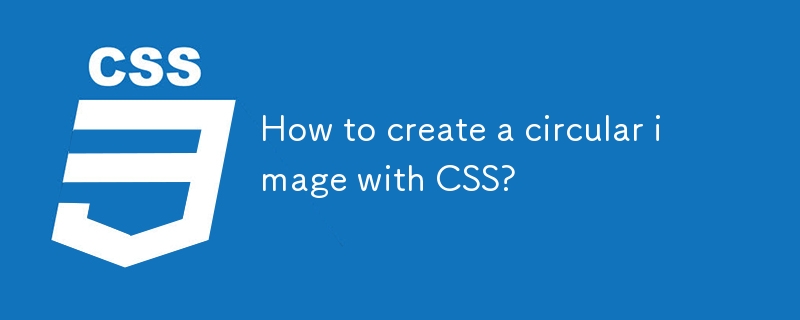
How to create a circular image with CSS?
Article Introduction:There are two main methods to create a circular picture using CSS: 1. Using border-radius: 50% is the easiest and common way, but make sure the picture is square, otherwise the ellipse will appear; 2. Using clip-path:circle (50%at50P%) can achieve more flexible circular cropping, suitable for creative effects or animations. In addition, it is recommended to wrap the image in a container, and enhance the control and visual effect by setting styles such as overflow:hidden, consistent width and height, object-fit:cover, etc., while paying attention to the clarity and adaptation of the image.
2025-07-20
comment 0
832

Using `` and `` in HTML5 for illustrations.
Article Introduction:Using and structuring the illustrations and their titles in HTML5 are very effective. Used to encapsulate independent content such as pictures, charts, etc., and provide them with titles. The combination of the two improves semantics and accessibility; it is commonly found in illustrations or data visualization scenarios in blogs, technical articles and reports; the default style can be customized through CSS to optimize layout and aesthetics, while enhancing the experience and SEO effects of screen reader users.
2025-07-09
comment 0
637

Applying HTML5 Principles to Responsive Web Design
Article Introduction:HTML5 improves responsive design through semantic tags, viewport control, responsive pictures and form optimization. 1. Use semantic tags such as, etc. to improve structural clarity, making it easier to flexibly arrange content blocks according to different devices; 2. By controlling mobile display, ensure that the page is correctly scaled and improve the mobile experience; 3. Use responsive image loading with tags, load adaptive resources according to screen size, and improve performance; 4. Use HTML5 form types such as email and tel to optimize mobile input, trigger the corresponding keyboard to improve user experience.
2025-07-15
comment 0
199

How do I use the poster attribute to display a preview image before the video starts playing?
Article Introduction:Poster attributes are used in HTML5 to specify the preview image displayed before the video starts playing, which is implemented by adding an image URL to the tag. When using it, you need to ensure the correct path. The picture should be a high-quality keyframe screenshot to avoid blurred or overly dark images, and optimize the loading speed; some browsers or mobile devices may not display posters due to fast video loading, dynamic src or automatic playback restrictions; posters can be scaled through CSS, but the style is restricted directly. Reasonable selection and processing of posters can improve the user experience.
2025-06-22
comment 0
867

Techniques for Responsive Image Scaling in CSS
Article Introduction:Responsive picture design can be achieved through a variety of techniques. 1. Use max-width and height:auto to ensure that the picture is automatically scaled and maintained in proportion, which is suitable for most content websites; 2. Use object-fit to control the filling method, such as cover, contain, fill, which is suitable for fixed-size containers; 3. Use background-size to process the background image and control the focus with background-position; 4. Use srcset to achieve multi-resolution adaptation to improve performance and display effects. Each method has its applicable scenarios and precautions.
2025-07-09
comment 0
182

How to visualize XML structures into images?
Article Introduction:How to visualize XML structures as images? Select programming languages ??and libraries: Use libraries such as Python and graphviz to implement XML parsing and graph drawing. Data preprocessing: Simplifies XML structure, control hierarchy, and merge nodes to reduce image complexity. Draw with graphviz: Use graphviz to automatically process the layout and adjust parameters such as node style and color as needed. Visualization Tools: Consider using visualization tools, but be aware of their flexibility and efficiency in handling large XML files. Focus on readability: The purpose of visualization is to clearly display the data structure, rather than pursue dazzling effects.
2025-04-02
comment 0
999
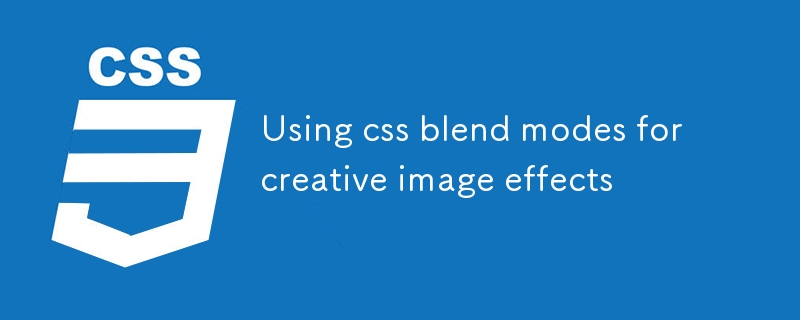
Using css blend modes for creative image effects
Article Introduction:CSS hybrid mode realizes creative image effects through mix-blend-mode and background-blend-mode properties. 1. Mix-blend-mode controls the mixing of elements and background, such as using the difference value to allow text to penetrate the picture to display; 2. Background-blend-mode controls the mixing of background layers, such as overlaying gradient tones; 3. Pay attention to browser compatibility when using it. Safari and Chrome support is good, but IE does not support it; 4. Use the isolation attribute to avoid hierarchical interference and ensure that the parent container has content support for the mixing effect.
2025-07-10
comment 0
705

How to make a responsive website with HTML5 and CSS3?
Article Introduction:The key to making a responsive website lies in the reasonable cooperation between HTML5 and CSS3, and the core is to make web pages display well on different devices. 1. Use HTML5 semantic tags to build clear structures, such as, , etc., to make the code easier to read and facilitate search engine crawling; 2. Use CSS3 media query to achieve multi-device adaptation, and apply different rules by detecting screen width, such as setting breakpoints such as mobile phones and tablets; 3. Use elastic layout (Flexbox or Grid) to deal with alignment and arrangement issues, and ensure that the navigation bar and other content automatically adapt to the screen; 4. Set image adaptation, use max-width:100% and srcset attributes to ensure that the image does not destroy the layout and improve the loading effect. Mastering these four key points can achieve compatibility with multiple settings
2025-07-13
comment 0
498

How to export a canvas drawing as an image file?
Article Introduction:The key to exporting HTML5Canvas drawings as image files is to use the toDataURL() or toBlob() method. 1. toDataURL() can directly generate base64 image links, which are suitable for quick display or downloading, but may fail due to cross-domain problems; 2. toBlob() returns the Blob object through a callback, which is more efficiently suitable for uploading or processing large images, and supports specified format and compression ratio; 3. When exporting, you need to pay attention to transparent background and color offset issues, and if necessary, you should pre-process the canvas content to ensure the output effect. Master the basic usage of these two and adjust the details according to your needs to complete the export.
2025-06-25
comment 0
609



















